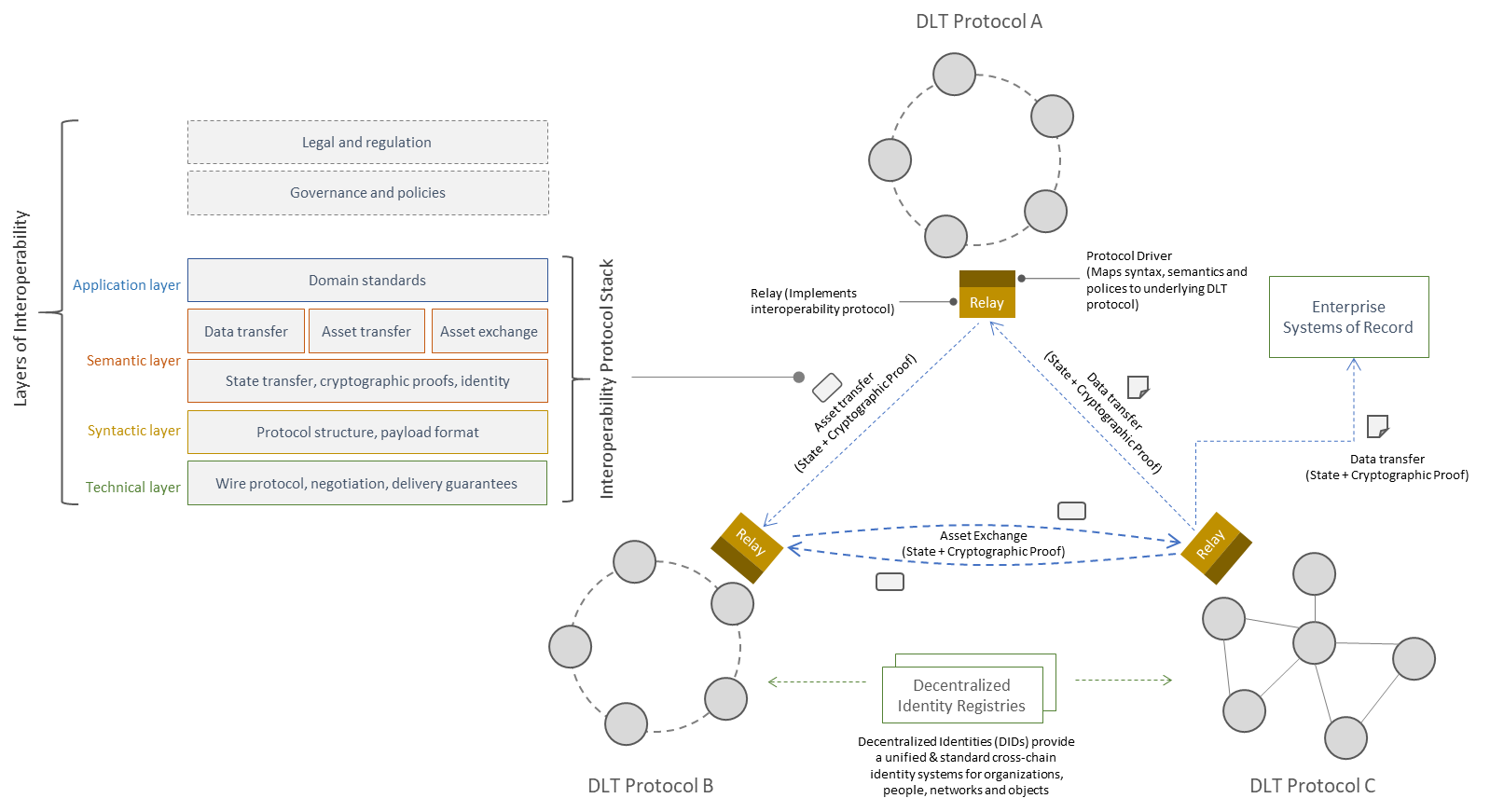Meet Weaver, one of the new Hyperledger Labs taking on cross-chain and off-chain operations
As enterprises and organizations increase their adoption and deployment of blockchain technology and networks, the overall complexity of systems are growing exponentially. While it’s exciting to see the expanding reach of blockchain, it also creates a host of new requirements for cross chain and off chain sharing of data, transactions and more.
At Hyperledger Global Forum (HGF) 2020 in Phoenix, one group of developers got together to share their work and create a blockchain integration tool designed to allow users to securely integrate different blockchains. They brought their project to Hyperledger Labs and, within a few months, it was approved as Hyperledger Cactus.
During this year’s HGF, three new Hyperledger Labs that are each tackling elements of cross-chain or off-chain operations are making their debuts: FireFly, Weaver and YUI. Read on to learn more about Weaver.
Meet Weaver: DLT Interoperability
By Venkatraman Ramakrishna, IBM Research – India
We are excited to announce Weaver, a project that was incubated in IBM Research. Weaver is an architectural framework with a family of protocols that enables scalable interconnectivity and interoperability between distributed ledgers while preserving core tenets of decentralization and security. This framework was motivated by the fragmentation of the blockchain ecosystem, with different flavors of permissioned blockchain and distributed ledger technologies (DLTs) leading to the proliferation of independent networks managing processes of limited scope and keeping assets in silos. Weaver’s mission is to link processes and enable seamless but controlled flow of assets and data across network boundaries. It seeks to achieve this while maintaining the autonomy of the networks and the ledgers within and avoiding dependencies on trusted intermediaries.
Overview
Weaver is a general-purpose interoperability framework that provides a common set of capabilities for trustworthy information communication across ledgers, whether they belong to the same network or different networks running on different DLT stacks. Key principles that guide Weaver’s design are:
- Accommodate DLT heterogeneity without favoring a particular DLT design
- Allow networks to maintain their independence and collective sovereignty
- Minimize coupling during cross-network interactions
- Rely on common standards for cross-network protocol units
- Do not require a trusted intermediary or third-party ledger
- Do not require changes to existing DLT stacks
- Make no security and trust assumptions on Weaver components
- Treat privacy and least privilege as a first-class requirement
Weaver addresses three broad classes of use cases:
- Data transfer: ledger data (state) communication with proof
- Asset transfer: movement of an asset from one ledger to another
- Asset exchange: atomic exchange of asset ownership in different ledgers
The protocols to realize these use cases can be abstracted into a common stack of layers akin to the OSI model, from message formats at the bottom to governance rules at the top (see diagram below).

The Weaver architecture has three major components underpinning it:
- DLT-agnostic Relays with DLT-specific drivers to route cross-network requests and responses.
- Interoperation modules that operate through their network’s native consensus processes, typically smart contracts or decentralized applications.
- Decentralized identity framework to share and authenticate network members’ identities.
The figure below illustrates this architecture, with a typical Fabric network to the left and a typical Corda network at the right. Weaver components are marked in green, and the design of the relay is called out in detail.

Hyperledger Labs Project
The Weaver Hyperledger Labs project was launched at the end of March 2021 with specifications detailed in a set of RFCs, a framework to run end-to-end network tests for updated or new interoperation protocols, and documentation to help users understand Weaver concepts and code in more detail.
Weaver currently offers protocols for data transfers among Hyperledger Fabric and Corda networks, and asset exchanges among Hyperledger Fabric networks. We hope to expand the coverage to more DLTs with the help of the community! Please check out the project repository for useful links and references and start contributing.
Learn more about Weaver and other recent code contributions from IBM in this panel from HGF:
For a more technical dive into the challenges of interoperability and approaches to tackles them, check out this HGF session:
Sign up for the monthly Hyperledger Horizon & /dev/weekly newsletters
By signing up, you acknowledge that your information is subject to The Linux Foundation's Privacy Policy